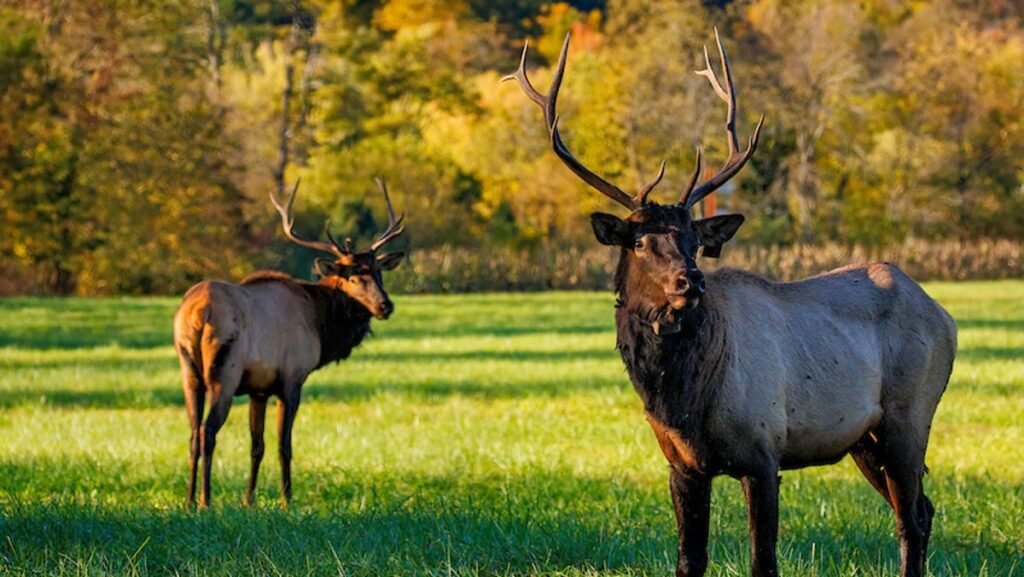Safety Alert: Why You Should Never Feed Wild Elk in Maggie Valley
As someone who’s spent years exploring and writing about the majestic Smoky Mountains, I’ve witnessed firsthand the remarkable return of elk to our region. Their reintroduction has been a conservation success story that fills me with joy every time I spot these magnificent creatures grazing along the misty mountainsides. But recent developments in Maggie Valley have me concerned, and I want to share some critical information with my fellow mountain enthusiasts.
The Growing Elk Interaction Problem in Maggie Valley
The North Carolina Wildlife Resources Commission has recently issued an urgent warning about dangerous interactions between humans and wild elk in the Maggie Valley area. As a frequent visitor to these mountains, I’ve noticed an alarming trend of tourists and even some locals approaching these massive animals far too closely – often for that perfect photo opportunity.
What many don’t realize is that elk aren’t just big deer – they’re powerful wild animals weighing up to 700 pounds with behaviors and instincts that can turn dangerous when they feel threatened.
Why You Should Never Feed Wild Elk
I remember my first elk sighting in the Smokies. The temptation to get closer was strong, but keeping a safe distance has always been the golden rule I follow. Here’s why feeding elk is extremely dangerous:
- It alters natural behaviors – Elk that associate humans with food lose their natural wariness
- It creates dependency – Animals become reliant on human handouts rather than natural foraging
- It leads to aggression – Elk may become demanding or defensive around food sources
- It creates health problems – Human food is often harmful to elk digestive systems
- It increases road hazards – Elk conditioned to approach humans may frequent roadways
The most concerning aspect is that these massive animals can become unpredictable when habituated to humans – especially during mating season when bulls are particularly territorial.
Understanding the Elk Reintroduction Program
The elk we see today in the Great Smoky Mountains National Park are descendants of animals reintroduced to the region after the native eastern elk were hunted to extinction in the late 1700s. The reintroduction program began in 2001 (not 2021 as mentioned in some reports) with the release of 25 elk from the Land Between the Lakes National Recreation Area in western Kentucky.
I’ve watched with amazement as these populations have slowly grown and expanded their range outside park boundaries into areas like Maggie Valley, creating both wonderful wildlife viewing opportunities and new management challenges.
How to Safely View Elk in the Smoky Mountains
Having spent countless mornings and evenings observing these magnificent creatures, I’ve learned some essential guidelines for responsible elk watching:
| Do | Don’t |
|---|---|
| Stay at least 50 yards (half a football field) away | Approach, feed, or touch elk |
| Use binoculars or telephoto lenses | Use flash photography at close range |
| Observe from your vehicle when possible | Block roadways to view elk |
| Report aggressive elk to park rangers | Make loud noises or sudden movements |
The best locations for safe elk viewing include Cataloochee Valley (especially at dawn or dusk) and the fields near the Oconaluftee Visitor Center. I particularly love early morning visits to Cataloochee when fog lingers in the valley and the elk emerge from the forest edges.
What to Do If You Encounter an Elk Up Close
Despite our best intentions, sometimes unexpected close encounters happen. If you find yourself too close to an elk:
- Back away slowly – never run
- Keep children and pets close
- Return to your vehicle if possible
- Watch for warning signs like lowered head, pawing ground, or ears pinned back
- If an elk approaches, move behind a solid barrier like a tree or car
Recognizing Dangerous Elk Behavior
During my years exploring the Smokies, I’ve learned to recognize when elk are becoming agitated. A bull elk will often bugle loudly, thrash its antlers in brush, or paw at the ground before charging. Cow elk with calves are equally protective and dangerous when they feel threatened.
The commission’s warning comes at a particularly important time as fall approaches – rutting (mating) season typically runs from September through October, when bull elk are most aggressive and unpredictable.
Protecting the Future of Elk in Our Mountains
I believe the return of elk to the Smokies is one of our region’s greatest conservation triumphs. To ensure these magnificent animals continue to thrive while maintaining safe boundaries with humans, we all need to do our part by respecting wildlife guidelines.
By observing from appropriate distances and never feeding these animals, we help preserve their wild nature and natural behaviors – which is ultimately what makes seeing them so special in the first place.
Remember, a truly meaningful wildlife encounter isn’t measured by how close you get, but by appreciating these animals in their natural state, behaving as they would if you weren’t there at all.
Report Concerning Elk Behavior
If you witness people feeding or approaching elk too closely, or if you observe aggressive elk behavior, please contact:
- Great Smoky Mountains National Park: (865) 436-1230
- N.C. Wildlife Resources Commission: 1-800-662-7137
Let’s work together to keep both people and elk safe in our beautiful mountain communities.
Source: Asheville Citizen Times
Image suggestion: Insert a photo of elk in Cataloochee Valley from a safe distance, demonstrating proper wildlife viewing practices.

